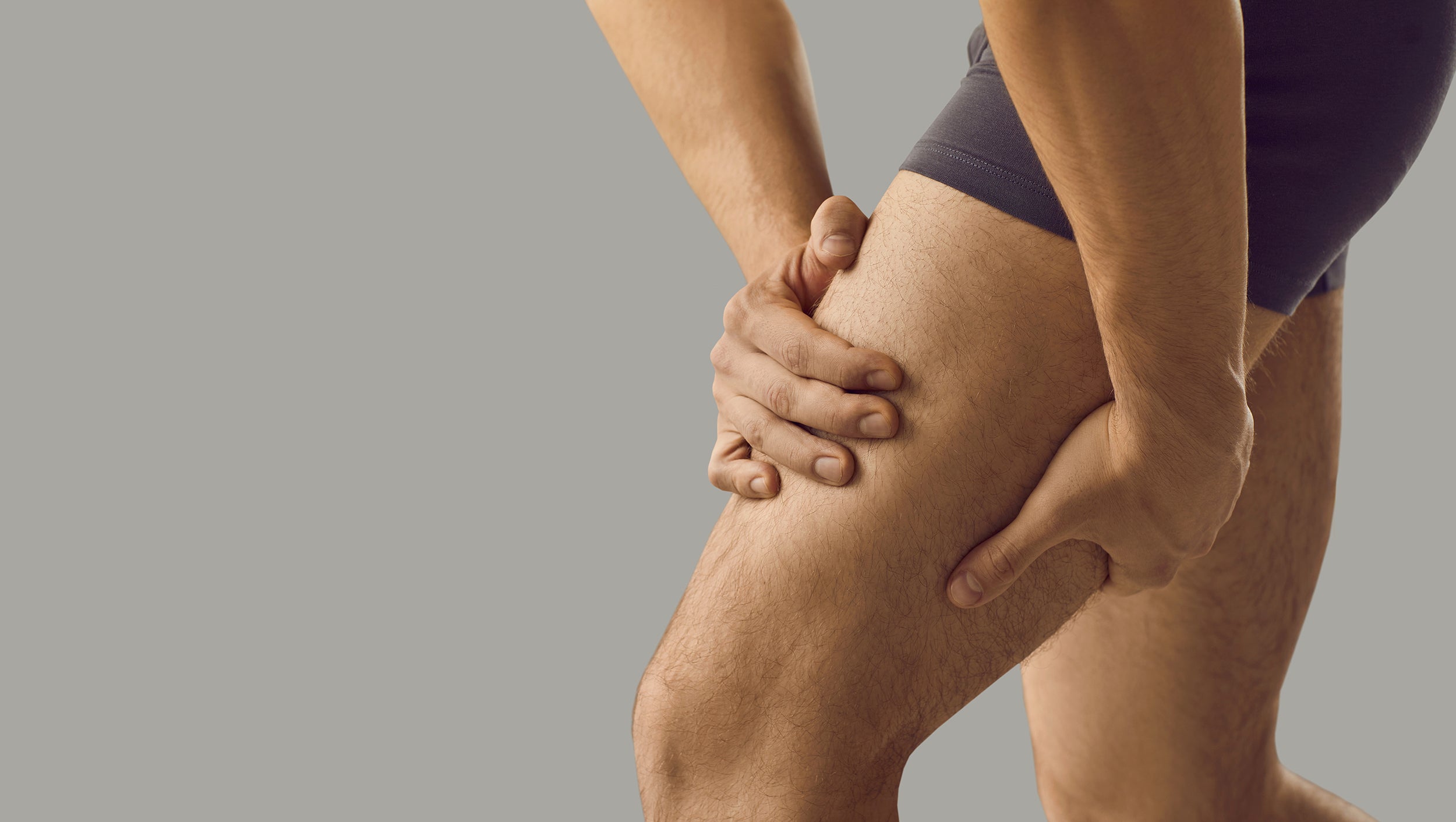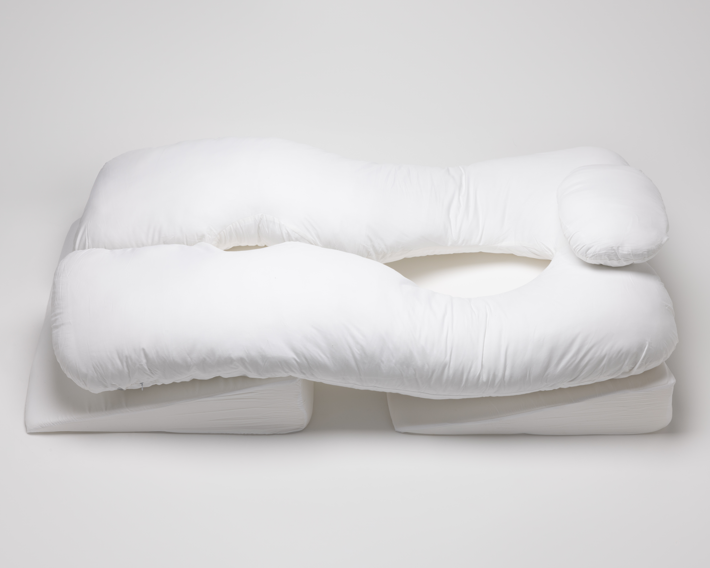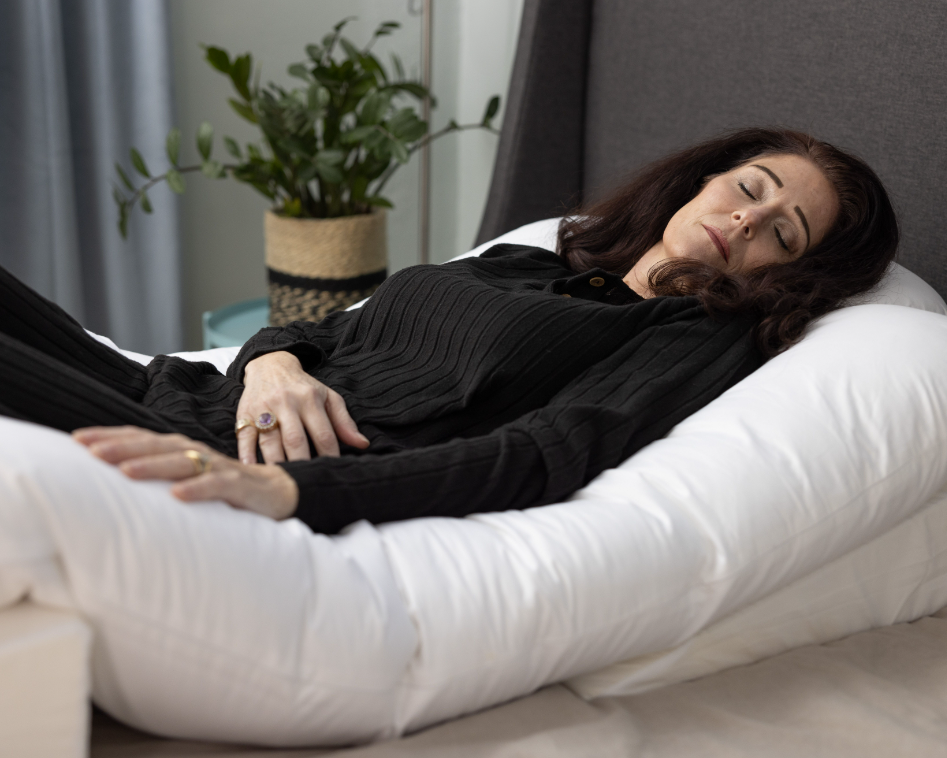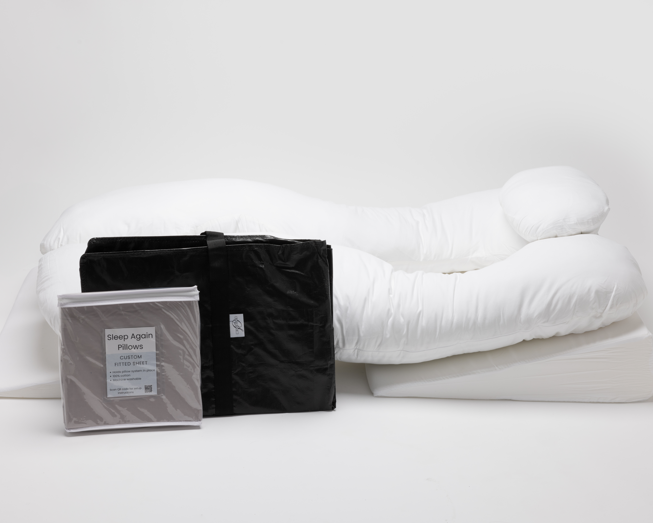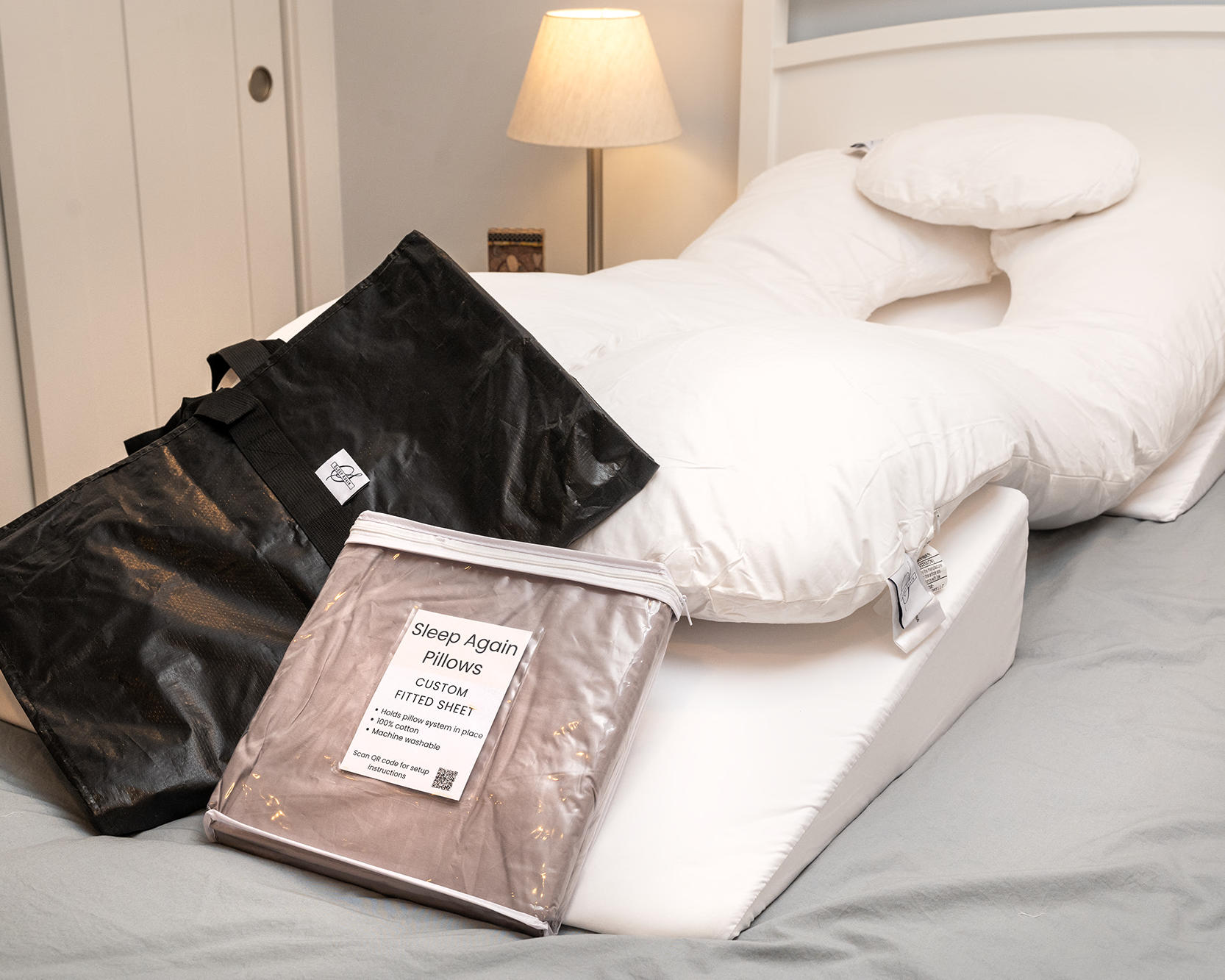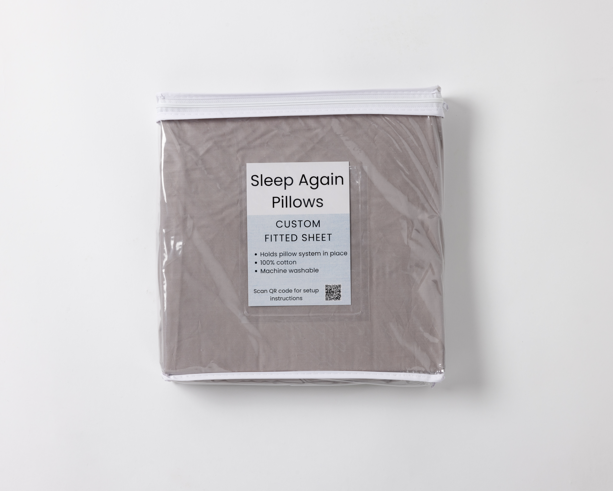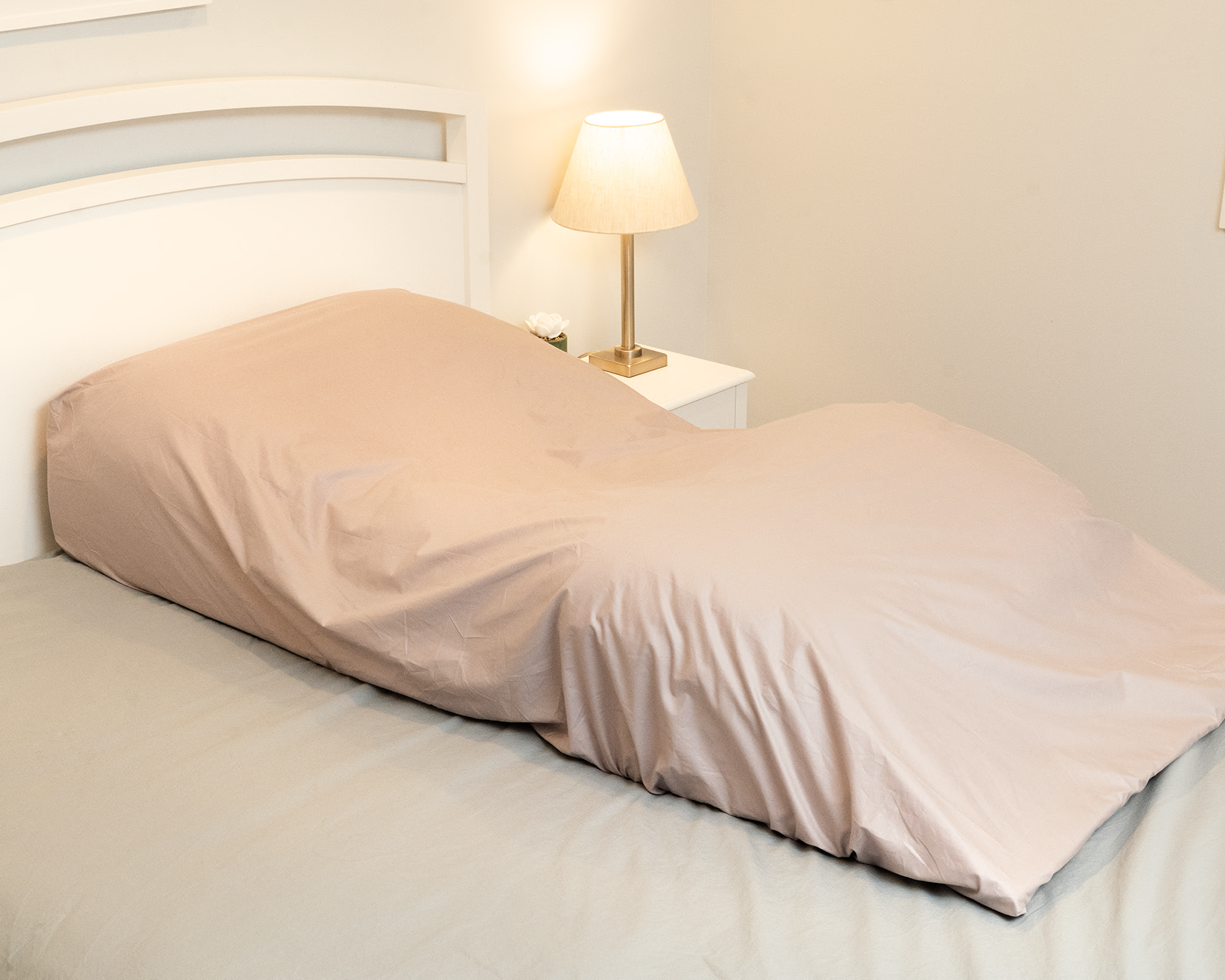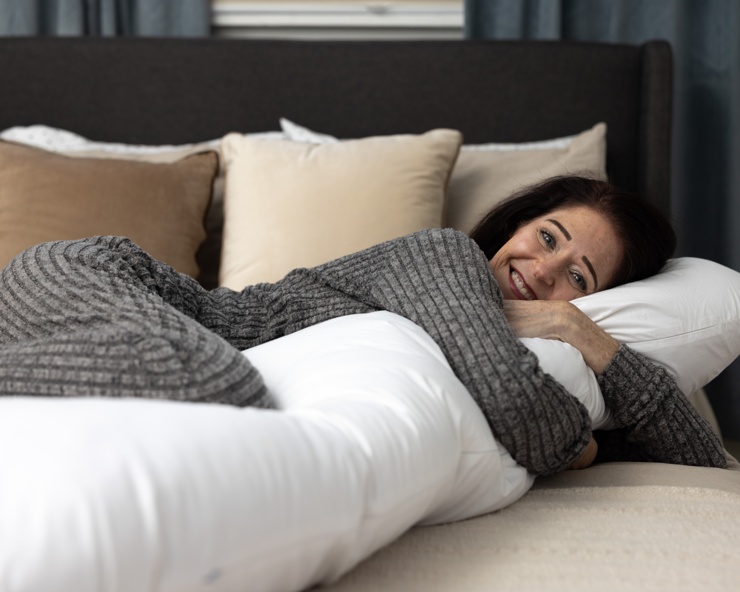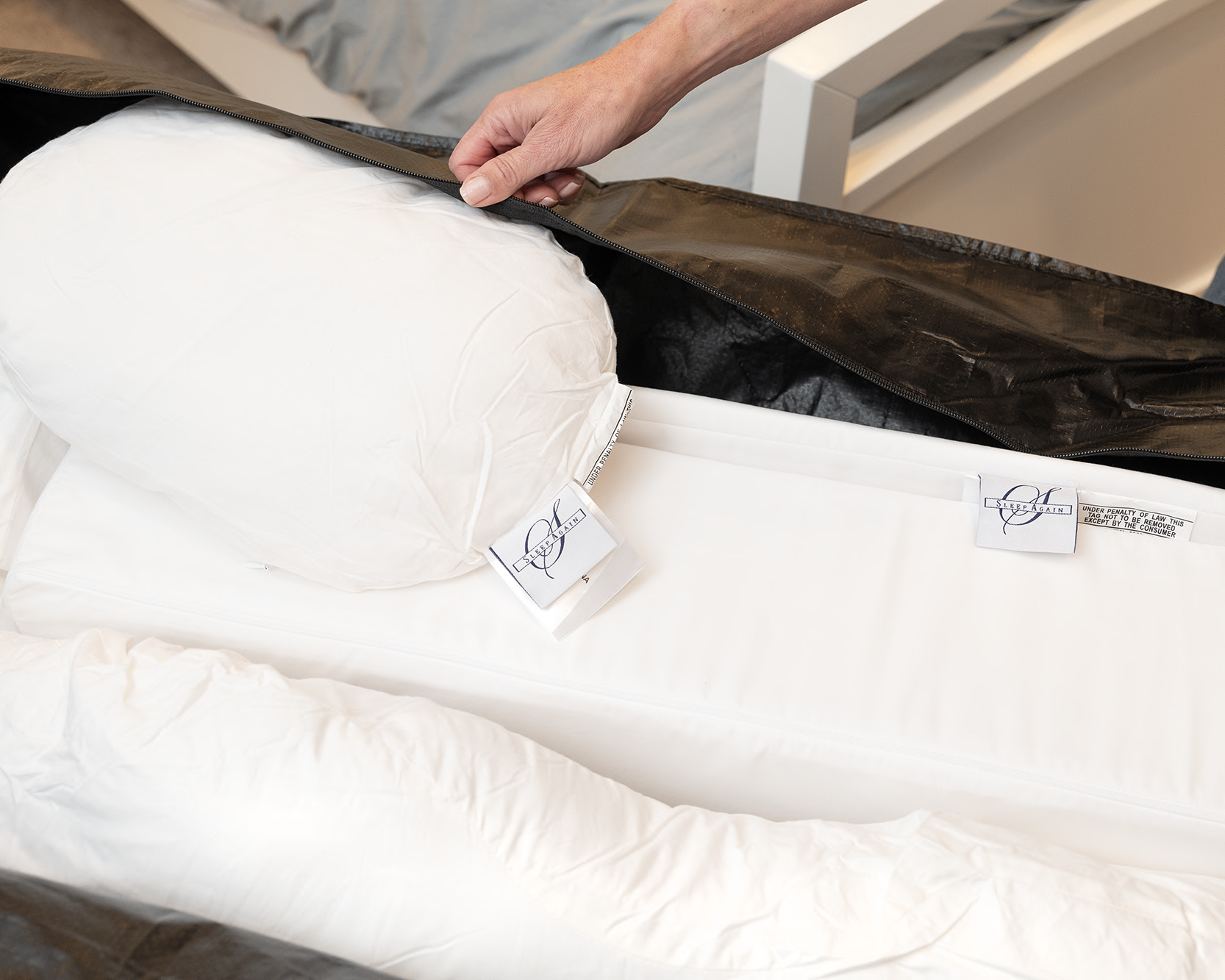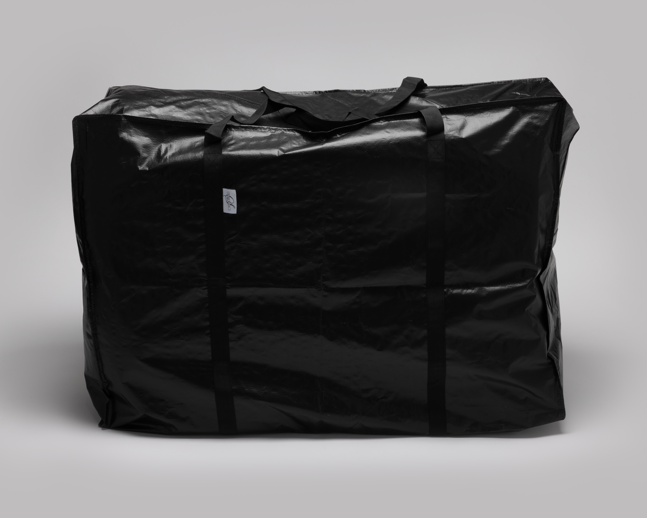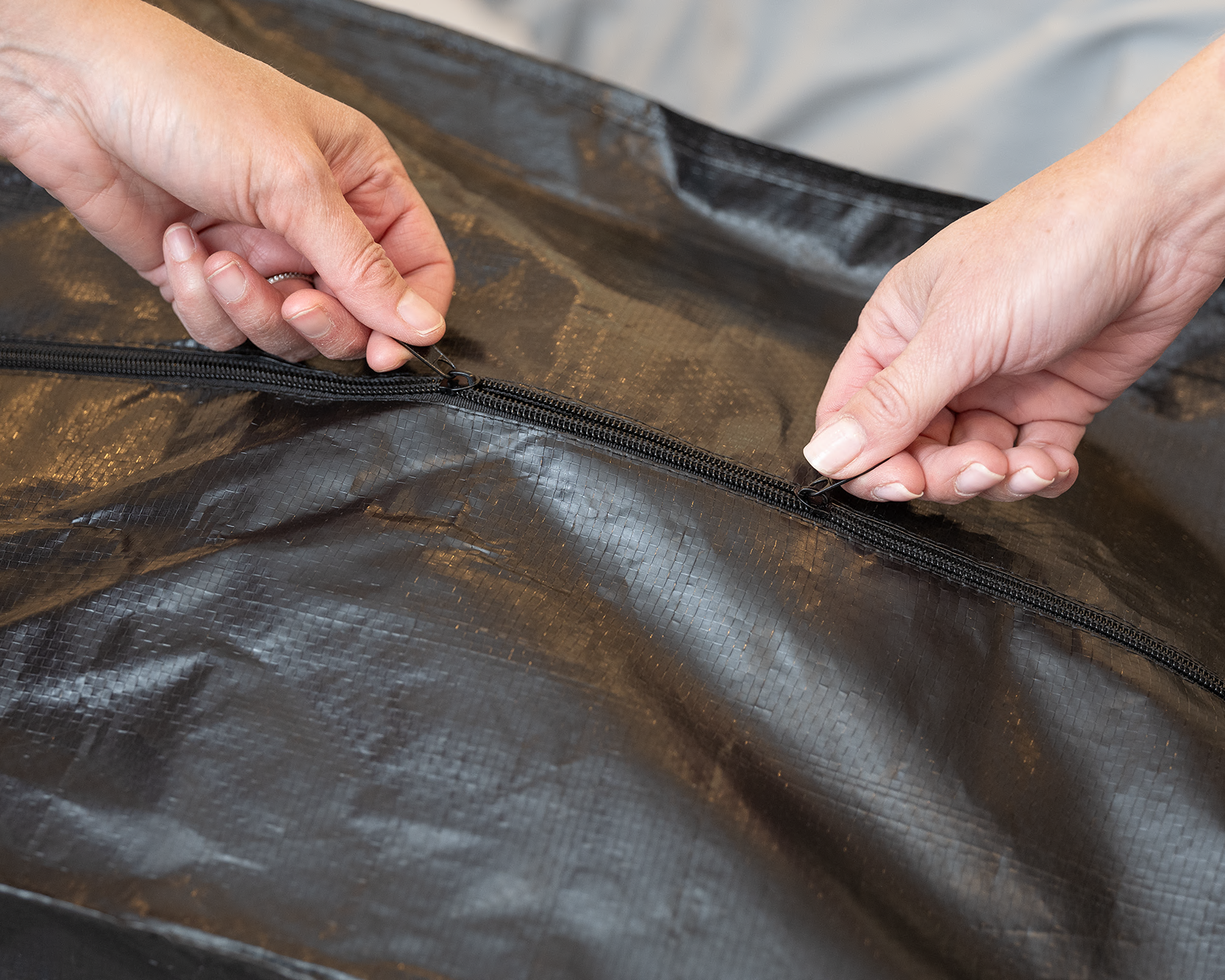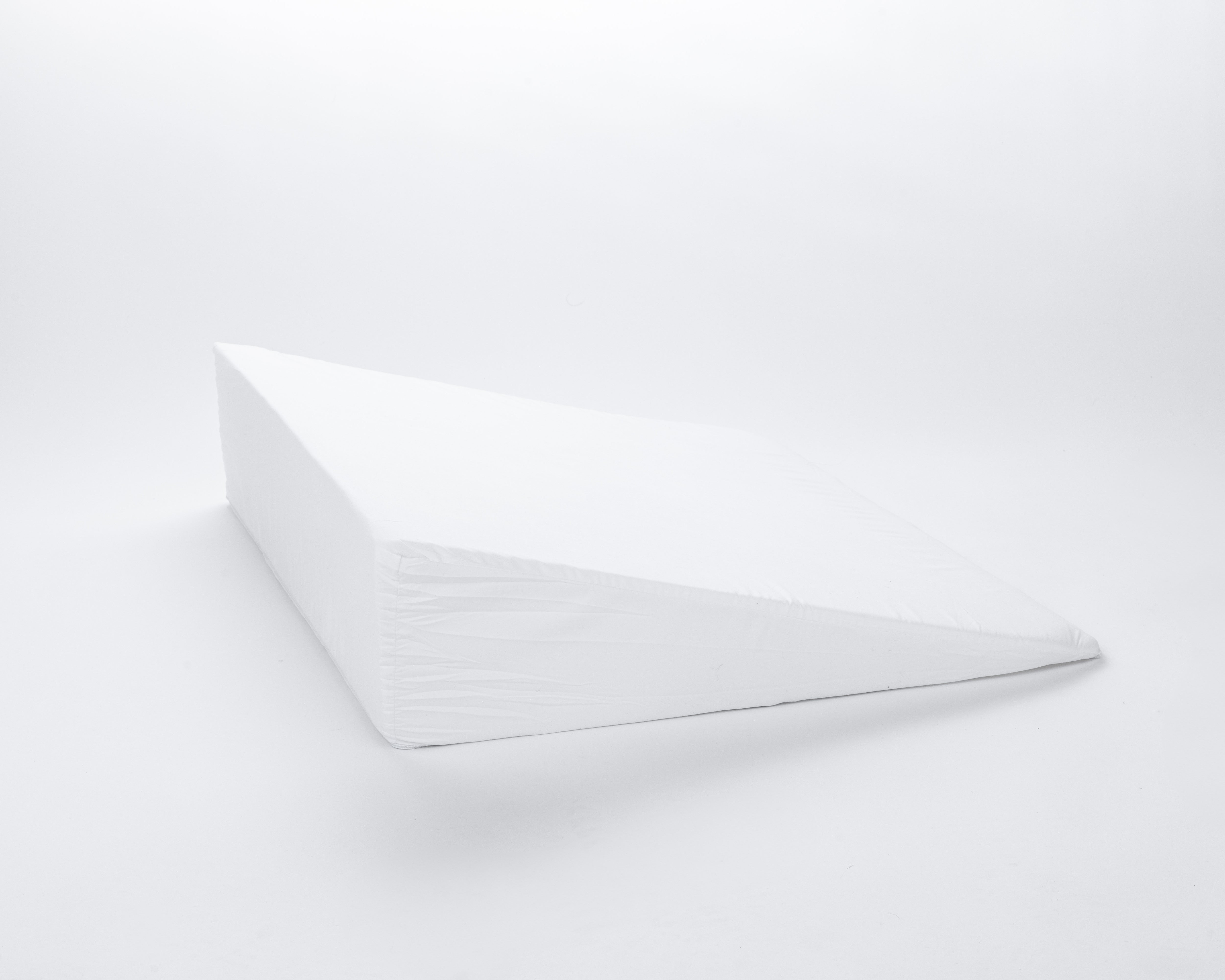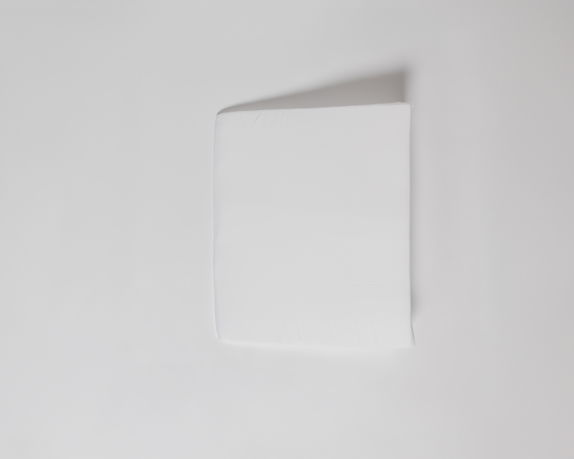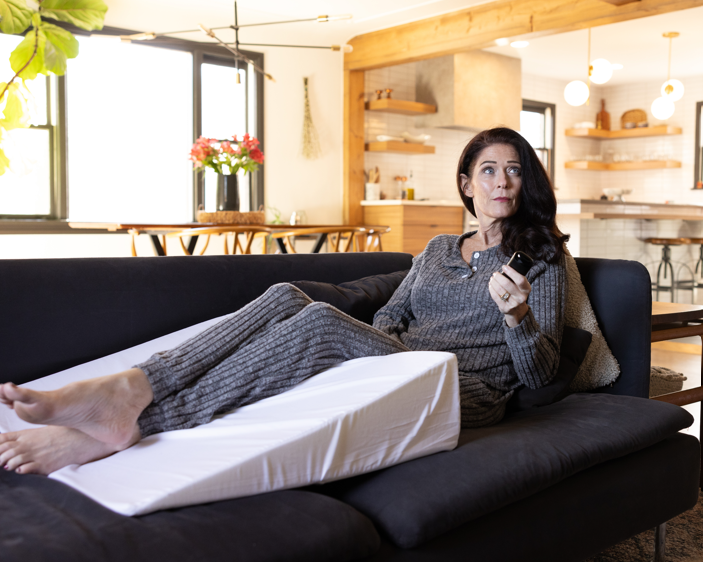Oh, the irony of IT band syndrome—no, it's not what happens when you've spent too many hours coding or answering help desk tickets. Despite sounding like something that afflicts overzealous tech workers (and let's be honest, it often does), the iliotibial (IT) band is actually a thick strip of fascia running from hip to knee that apparently didn't get the memo about being a team player. When this anatomical diva gets inflamed, it transforms your peaceful slumber into an Olympic event of tossing, turning, and midnight pillow-punching. This article explores how to put your rebellious IT band in its place through the optimal back sleeping position and how specialized support systems like the Sleep Again Pillow System can help you reclaim those sweet dreams without negotiating with your thigh at 3 AM.

Understanding IT Band Syndrome
Before diving into sleeping positions, let's get acquainted with this troublemaker. The IT band is essentially the body's built-in seat belt, stabilizing both hip and knee movements. But unlike your car's safety feature, this one doesn't come with a convenient release button when it decides to tighten up. When inflamed—often because you've been marathoning spreadsheets by day and actual marathons on weekends—it delivers pain with the precision of a GPS, usually targeting the outside of your knee or hip.
Common Causes of IT Band Syndrome
IT band syndrome loves to target people who:
-
Have mastered the art of sitting still for eight-plus hours (looking at you, keyboard warriors)
-
Think "ergonomics" is just a fancy word interior designers use (your chair has settings for a reason)
-
Believe weekends are for punishing your body for all that sitting (hello, sudden-onset running enthusiasts)
-
Lost the genetic lottery with leg length discrepancies or feet that roll inward like they're trying to see what your arches are up to
-
Have hip muscles weaker than excuses on a Monday morning
For desk dwellers, the combination of weekday immobility and weekend warrior syndrome creates the perfect storm for IT band rebellion. And naturally, like all good villains, your IT band waits until you're horizontal and vulnerable at night to unleash its most diabolical discomfort.
Why Sleep Position Matters for IT Band Pain
Sleep isn't just your body's way of forcing you to stop checking emails—it's prime time for tissue repair and inflammation reduction. Unfortunately, your sleeping position can either be your IT band's spa retreat or its torture chamber. An improper sleeping position can:
-
Squish your already irritated IT band like it's a stress ball (spoiler: it doesn't appreciate this)
-
Twist your body into alignments that would make a yoga instructor wince and your IT band scream
-
Turn your blood circulation into rush-hour traffic—slow and inefficient exactly where you need it most
-
Force your body into compensatory positions that are basically just rearranging deck chairs on the Titanic of pain
Research published in the Journal of Orthopaedic & Sports Physical Therapy—because yes, people study how you sleep, not just what you do while awake—suggests that proper nighttime positioning can reduce pain by up to 60%. That's better odds than most lottery tickets and investments combined. And when it comes to optimal positioning for IT band peace negotiations, back sleeping with proper support reigns supreme.

The Ultimate Sleeping Position for IT Band Relief: Back Sleeping with Elevated Knees
When it comes to giving your IT band the VIP treatment it apparently thinks it deserves, back sleeping with proper knee elevation is the undisputed champion. This supine position (fancy word for "on your back") places your IT band in a relaxed, non-stretched position, essentially giving it a timeout from its tantrums.
How to perfect this position:
-
Lie flat on your back on a medium-firm mattress—not so soft you're swallowed whole, not so firm you're contemplating the life choices that led you to sleep on what feels like concrete
-
Position a wedge pillow under your knees, creating approximately 15-20 degrees of flexion (the angle that tells your IT band "we can do this the easy way or the hard way")
-
Maintain your natural lumbar curve with appropriate lower back support because one angry body part is enough
-
Keep your arms at your sides or comfortably across your abdomen—not overhead like you're surrendering, which can affect shoulder alignment and start a chain reaction of misalignment dominos
The Sleep Again Pillow System's adjustable components are particularly brilliant for this position, as they can be configured to provide the precise elevation needed for your specific body proportions and pain level—because your IT band trouble is as unique as your password recovery questions.
The science behind back sleeping supremacy:
When you lie on your back with your knees slightly elevated, magical things happen:
-
Your pelvis maintains a neutral position, which keeps your IT band from being unnecessarily stretched
-
Pressure distributes evenly across your body rather than concentrating on particular trouble spots
-
Your spine aligns naturally, reducing compensatory tension in surrounding muscles
-
Blood circulation improves to inflamed areas, bringing healing nutrients to the party
Studies from the American Academy of Orthopedic Surgeons suggest that this single position can reduce recovery time by up to 30% compared to suboptimal sleeping positions. If that doesn't motivate you to embrace your inner back-sleeper, perhaps the prospect of actually sleeping through the night without your IT band sending pain telegrams will.

Positions to Avoid with IT Band Syndrome
While back sleeping with elevated knees is your IT band's preferred peace treaty, there are other positions that should come with warning labels and possibly alarm bells:
1. Side Sleeping (Either Side)
Sleeping on your side creates uneven pressure distribution and can compress your IT band regardless of which side you choose. Side sleeping leads to:
-
Midnight pain parties where you're the reluctant host
-
Hip and knee misalignment that sets your recovery back further than your clock during daylight savings
-
Morning stiffness that makes the Tin Man look limber
-
Recovery timelines extending longer than the final season of your favorite TV show
2. Stomach Sleeping
Stomach sleeping is essentially the villain origin story for IT band pain. This position twists your pelvis and rotates your legs with all the finesse of a pretzel maker. The resulting misalignment may contribute to:
-
Tension along your IT band that could rival guitar strings
-
Lower back compensation patterns that start a whole new problem collection
-
Daytime hip rotation issues that make you walk like you're perpetually trying to sneak up on someone
3. Back Sleeping without Knee Support
Even back sleeping can go wrong without proper support. Lying flat without knee elevation is essentially telling your legs, "Go wild, do whatever you want!" They typically respond by rotating outward like they're trying to make snow angels, potentially cranking up IT band tension. The resulting strain can lead to:
-
IT band tension that gradually increases through the night like a slow-cooking disaster
-
Hip flexor tightness that carries over into your waking hours
-
Core instability that leaves your body searching for sturdy ground that isn't there

Optimizing Your Sleep Environment for IT Band Pain
Beyond body positioning, your sleep environment plays a crucial role in managing IT band discomfort.
Mattress Considerations
Your mattress choice for IT band pain matters almost as much as your choice of life partner—and sometimes it's the one you'll spend more consistent time with. Research published in The Lancet suggests that medium-firm mattresses generally provide the best support for musculoskeletal pain, giving us yet another area of life where moderation trumps extremes.
Look for:
-
Medium to medium-firm support (5-7 on the firmness scale)—not marshmallow soft or concrete hard
-
Pressure point relief that makes your hips and shoulders feel like VIP guests, not unwelcome burdens
-
Minimal motion transfer if you share a bed, because your partner doesn't deserve to ride the waves of your midnight repositioning adventures
-
Edge support solid enough to prevent you from slowly migrating into positions that turn your IT band into a vendetta-holding enemy
Memory foam and hybrid mattresses often hit the sweet spot, providing that body-contouring hug without the excessive sinkage that turns your pelvis and IT band into unwilling participants in a game of anatomical Twister.
Pillow Selection and Placement for Back Sleeping
Pillows aren't just fluffy rectangles for resting your head—they're strategic weapons in your battle against IT band pain. Used correctly in the back sleeping position, they're like the special ops team of your sleep setup. The Sleep Again Pillow System incorporates five components together to maintain proper spinal alignment.
Head and Neck Support:
-
Select a medium-height head pillow that cradles your neck's natural curve without making you feel like your head is attempting to summit Everest
-
Avoid pillows that prop your head too far forward, creating a tech-neck situation even while you sleep
-
Look for pillows with a slight contour that supports the cervical spine
Knee Support (The MVP of IT Band Relief):
-
Place a dedicated knee pillow or wedge under your knees to achieve that perfect 15-20 degree angle
-
Ensure the support is wide enough to accommodate both legs without them sliding off
-
Select a firm-yet-comfortable density that won't compress to nothingness by morning
-
Consider a contoured design that creates a slight valley for your legs to rest in
Optional Lower Back Support:
-
Add a small, thin lumbar roll that whispers support to your lower back without shouting about it
-
Position it in the natural curve of your lower back, not pushing your spine into an exaggerated arch
The Sleep Again Pillow System's adjustable nature makes it the chameleon of the pillow world—adapting to your unique pain patterns and body structure in ways those sad, generic pillows from the department store could never dream of achieving. Its integrated components work together like a well-rehearsed orchestra, supporting your back sleeping position throughout the night instead of abandoning ship at the first sign of movement.

Creating a Transition Routine for Better Sleep
The transition from daytime to sleep isn't just about closing your laptop and faceplanting into your pillow (tempting as that may be). For IT band sufferers, how you prepare for horizontal hours can mean the difference between sweet dreams and a nightmarish pain festival.
Pre-Sleep Stretching Protocol
A gentle 5-10 minute stretching routine can prep your IT band for its nighttime behavior modification program:
-
Standing IT Band Stretch: Cross your unaffected leg in front of the troublemaker and lean toward the good side, creating a stretch along your outer thigh that says "I'm in charge here" to your rebellious fascia.
-
Figure Four Stretch: Lie on your back, cross the problematic leg over the opposite knee in what looks suspiciously like a passive-aggressive yoga pose, and gently pull the bottom leg toward your chest.
-
Foam Roller Decompression: Gently roll surrounding muscles on a foam roller—not directly on the inflamed IT band unless you enjoy tears as a sleep aid. Think of it as giving your leg muscles a spa treatment before their big performance.
-
Hip Flexor Release: Kneel in a lunge position with your affected leg forward, gently pressing your hip forward like you're very slowly trying to escape an invisible box.
Perform each stretch for 30-60 seconds with gentle, controlled movements—this isn't an Olympic event, and aggressive stretching will just convince your IT band to double down on its vendetta against you.
Temperature Regulation for Reduced Inflammation
Research in the International Journal of Hyperthermia indicates that temperature management can impact inflammatory responses. For IT band issues:
-
Apply a cold pack to inflamed areas 15-20 minutes before bed if acute inflammation is present
-
Consider a warm shower or heat application for chronic cases to increase blood flow
-
Maintain a cool sleeping environment (65-68°F/18-20°C) to support anti-inflammatory processes during sleep
The Sleep Again Pillow System's breathable materials help maintain optimal temperature around pressure points, preventing the heat buildup that can worsen inflammation.
Nighttime Pain Management Strategies
Even with optimal positioning, breakthrough pain may occur. Integrating these strategies can help:
Progressive Muscle Relaxation Technique
This evidence-based technique involves systematically tensing and relaxing muscle groups:
-
Begin at your feet and progressively work upward
-
Tense each muscle group for 5 seconds
-
Release and feel the relaxation for 10 seconds
-
Pay special attention to the gluteal and hip muscles on the affected side
This practice not only reduces physical tension but decreases stress hormones that can exacerbate inflammation.
Daytime Habits That Impact Nighttime IT Band Pain
Sleep quality for IT band sufferers doesn't begin at bedtime—it's influenced by your entire day's activities.
Workplace Ergonomics
For office workers and IT professionals, workplace setup significantly impacts IT band health:
-
Position your chair height so feet rest flat with knees at 90 degrees
-
Ensure 2-3 finger widths between the chair edge and back of knees
-
Use a standing desk option for a portion of the workday when possible
-
Take movement breaks every 30-45 minutes
-
Consider an ergonomic assessment if pain persists
Movement Patterns and Exercise Selection
Research in the Journal of Strength and Conditioning Research demonstrates that targeted exercises can reduce IT band pain by strengthening supporting muscles:
Recommended exercises:
-
Clamshells for gluteus medius activation
-
Side-lying leg raises with proper form
-
Hip bridges focusing on gluteal engagement
-
Core stabilization exercises
Exercises to modify or avoid:
-
Deep squats that increase knee valgus
-
Excessive downhill running
-
Prolonged cycling without proper bike fitting
-
Repetitive step-up movements
Incorporating these exercises earlier in the day, rather than just before bed, allows muscles to recover before sleep positioning.

Using the Sleep Again Pillow System for Back Sleeping IT Band Relief
While random pillows and supports can help with IT band pain in the way that a band-aid helps a deep cut, integrated systems offer the comprehensive approach your stubborn fascia really needs. The Sleep Again Pillow System is the #1 doctor-recommended sleep support for back sleepers, standing out for several reasons:
Component Integration for Complete Back Support
Unlike individual pillows that play musical chairs throughout the night, abandoning their posts at the first sign of movement, the Sleep Again system features components that work together like a well-synchronized team, especially when using its Custom Fitted Sheet to hold everything in place. This integration is particularly important for IT band sufferers committed to back sleeping:
-
The primary support maintains spinal alignment with the dedication of a helicopter parent
-
The knee elevation component stays perfectly positioned all night, not migrating south as you sleep
-
Adjustable components work together to keep you in the optimal back sleeping position
-
Modular design allows customization of height and firmness—because your IT band trouble is as unique as your Netflix recommendations
Graduated Density Technology for Back Sleeping Perfection
The system's graduated density approach is like having a personal bodyguard team—firm where you need solid support (knee elevation) and softer where tenderness requires a gentler touch (lumbar region). This is particularly brilliant for IT band issues that benefit from precise positioning.
Back Sleeping Training Functionality
For those not naturally inclined to sleep on their backs, the Sleep Again Pillow System acts like training wheels for proper sleep positioning. Its design gently discourages rolling to your side or stomach, helping you maintain the optimal back sleeping position for IT band relief throughout the night.
Temperature Regulation for Inflammation Control
The Sleep Again Pillow System's breathable materials help maintain optimal temperature around pressure points, preventing the heat buildup that can worsen inflammation. This keeps your back sleeping experience comfortable while supporting your IT band's healing process.
Tracking Sleep Position and Pain Correlation
Understanding the relationship between specific sleep positions and your pain levels can accelerate recovery. Consider implementing a simple tracking system:
-
Note your pain level on a 0-10 scale before bed
-
Record your primary sleep position and pillow configuration
-
Rate morning pain and stiffness
-
Look for patterns over 1-2 weeks
This data can help you refine your approach and identify which positions and support configurations provide the greatest relief for your specific situation.

When to Seek Professional Guidance
While optimizing sleep position can significantly improve IT band pain, certain situations warrant professional consultation:
-
Pain that persists despite 2-3 weeks of sleep position optimization
-
Night pain that wakes you multiple times despite proper positioning
-
Symptoms that worsen rather than gradually improve
-
Development of new symptoms like numbness, tingling, or weakness
Healthcare providers who specialize in musculoskeletal issues can provide targeted interventions including:
-
Customized physical therapy protocols
-
Specific manual therapy techniques
-
Evaluation for contributing biomechanical issues
-
Assessment for potential imaging if needed
Conclusion: The Back Sleeping Solution for IT Band Relief
Managing IT band pain during sleep is less like following a recipe and more like conducting an orchestra—it requires coordinating multiple elements, including proper back positioning, strategic support, environment, and daytime habits. By implementing the strategies outlined in this article, particularly concerning optimal back sleeping with knee elevation and proper support systems, you can transform sleep from an eight-hour torture session into the healing retreat your body desperately needs.
Back sleeping with properly elevated knees—like royalty on a throne designed by anatomical engineers—can dramatically reduce nighttime discomfort and accelerate healing. When combined with appropriate support like the Sleep Again Pillow System (which is essentially the superhero sidekick to your recovery journey), strategic pre-sleep routines, and daytime habits that don't further antagonize your IT band, you create a recovery strategy more comprehensive than most five-year plans.
Remember that consistency is key (your IT band has a long memory for grudges), and perfecting your back sleeping position may require some experimentation that makes you feel like a scientific test subject in your own bedroom. By applying these evidence-based approaches and listening to your body's feedback—even when it's delivering that feedback at 3 AM—you can work toward pain-free nights and days where your IT band is just another boring anatomical feature you never need to think about again.
With the right back sleeping setup featuring the Sleep Again Pillow System, you'll be well on your way to reclaiming your sleep and telling your IT band who's really in charge around here.
Medical Disclaimer
The information provided in this article is intended for general informational and educational purposes only and is not a substitute for professional medical advice, diagnosis, or treatment. Always seek the advice of your physician or other qualified healthcare provider with any questions you may have regarding a medical condition, including IT band syndrome. Never disregard professional medical advice or delay seeking it because of something you have read in this article. The Sleep Again Pillow System should be used as part of a comprehensive treatment plan developed in consultation with healthcare professionals. If you experience severe or persistent pain, numbness, tingling, or weakness, consult with a healthcare provider immediately. Individual results may vary, and what works for one person may not be appropriate for another. Your healthcare provider can help determine the best approach for your specific situation.
References
-
Fredericson, M., & Wolf, C. (2005). Iliotibial band syndrome in runners: innovations in treatment. Sports Medicine, 35(5), 451-459.
-
Fairclough, J., Hayashi, K., Toumi, H., Lyons, K., Bydder, G., Phillips, N., Best, T. M., & Benjamin, M. (2006). The functional anatomy of the iliotibial band during flexion and extension of the knee: implications for understanding iliotibial band syndrome. Journal of Anatomy, 208(3), 309-316.
-
Ellis, R., Hing, W., & Reid, D. (2007). Iliotibial band friction syndrome—A systematic review. Manual Therapy, 12(3), 200-208.
-
Kovacs, F. M., Abraira, V., Peña, A., Martín-Rodríguez, J. G., Sánchez-Vera, M., Ferrer, E., Ruano, D., Guillén, P., Gestoso, M., Muriel, A., & Zamora, J. (2003). Effect of firmness of mattress on chronic non-specific low-back pain: randomized, double-blind, controlled, multicentre trial. The Lancet, 362(9396), 1599-1604.
-
Baker, R. L., & Fredericson, M. (2016). Iliotibial Band Syndrome in Runners: Biomechanical Implications and Exercise Interventions. Physical Medicine and Rehabilitation Clinics of North America, 27(1), 53-77.
-
Strauss, E. J., Kim, S., Calcei, J. G., & Park, D. (2011). Iliotibial band syndrome: evaluation and management. Journal of the American Academy of Orthopaedic Surgeons, 19(12), 728-736.

